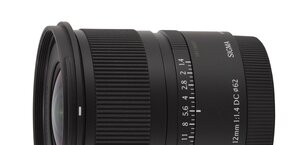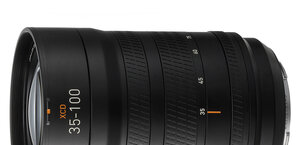Sony E PZ 10-20 mm f/4 G
8. Vignetting
Let's check how the tested lens performs in the vignetting category both for JPEG files and for RAW files developped by neutral software. Of course you have to remember that vignetting on JPEGs isn't corrected but distortion is, and, as a result, these files are cropped. Neutral RAWs show, for a change, exactly what optics does with an image- without any distortion and/or vignetting correction.
Let's deal with JPEG files first – their appearance at particular focal lengths and aperture values is presented below.
Please Support UsIf you enjoy our reviews and articles, and you want us to continue our work please, support our website by donating through PayPal. The funds are going to be used for paying our editorial team, renting servers, and equipping our testing studio; only that way we will be able to continue providing you interesting content for free. |
- - - - - - - - - - - - - - - - - - - - - - - - - - - - - - - - - - - - - - - - - - - - - - - -
| A7R III, APS-C, JPEG, 10 mm, f/4.0 | A7R III, APS-C, JPEG, 10 mm, f/5.6 |

|

|
| A7R III, APS-C, JPEG, 15 mm, f/4.0 | A7R III, APS-C, JPEG, 15 mm, f/5.6 |

|

|
| A7R III, APS-C, JPEG, 20 mm, f/4.0 | A7R III, APS-C, JPEG, 20 mm, f/5.6 |

|

|
At the most difficult combination of the widest angle of view and the maximum relative aperture brightness loss in the frame corners amounts to 46% (−1.79 EV). It's a lot, but we have seen worse results. Stopping down the aperture to f/5.6 decreases vignetting to 37% (−1.33 EV), and after applying f/8.0 you can reduce it to a level of 31% (−1.01 EV). Further decrease, although very slight, can be observed by f/11.0 where the aberration, described here, reaches 29% (−1.01 EV).
The situation is very similar in the middle of the focal range. By f/4.0 vignetting is 45% (−1.71 EV), by f/5.6 it decreases to 36% (−1.28 EV), and by f/8.0 it amounts to 29% (−1.01 EV). Stopping down the lens to f/11.0 produces another but only cosmetic decrease of vignetting to a value of 27% (−0.93 EV).
When you pass to the 20 mm focal length the situation doesn't change almost at all. By f/4.0 light fall-off in the frame corners reaches 47% (−1.83 EV) and it is decreased to 34% (−1.19 EV) on stopping down the aperture to f/5.6. By f/8.0 and f/11.0 we got, respectively, the following results: 28% (−0.93 EV) and 25% (−0.83 EV).
How the situation changes on RAW files developped by neutral software? Let's check it out.
| A7R III, APS-C, RAW, 10 mm, f/4.0 | A7R III, APS-C, RAW, 10 mm, f/5.6 |

|

|
| A7R III, APS-C, RAW, 15 mm, f/4.0 | A7R III, APS-C, RAW, 15 mm, f/5.6 |

|

|
| A7R III, APS-C, RAW, 20 mm, f/4.0 | A7R III, APS-C, RAW, 20 mm, f/5.6 |

|

|
At the shortest focal length the results are distinctly higher. By f/4.0 brightness loss in frame corners reaches as much as 59% (−2.57 EV), and on stopping down to f/5.6 it decreases to 50% (−1.98 EV). By f/8.0 and f/11.0 we got 42% (−1.56 EV) and 38% (−1.38 EV) respectively. When you reduce the aperture to f/16.0 you see another decrease, this time to a level of 35% (−1.25 EV).
In case of 15 and 20 mm focal lengths distortion is much lower than at the widest angle of view so images are just slightly cropped after automatic correction. As a result, differences between RAW and JPEG files become very slight. We don't want to bore you with another list of results; let's only add that the values for RAW files are typically by 1-3% higher than those for JPEG files. All these values are low, often fitting our margin of error.
| Sony A7R III, APS-C, 10 mm, JPEG, f/4.0 |
 |
| Sony A7R III, APS-C, 15 mm, JPEG, f/4.0 |
 |
| Sony A7R III, APS-C, 20 mm, JPEG, f/4.0 |
 |






